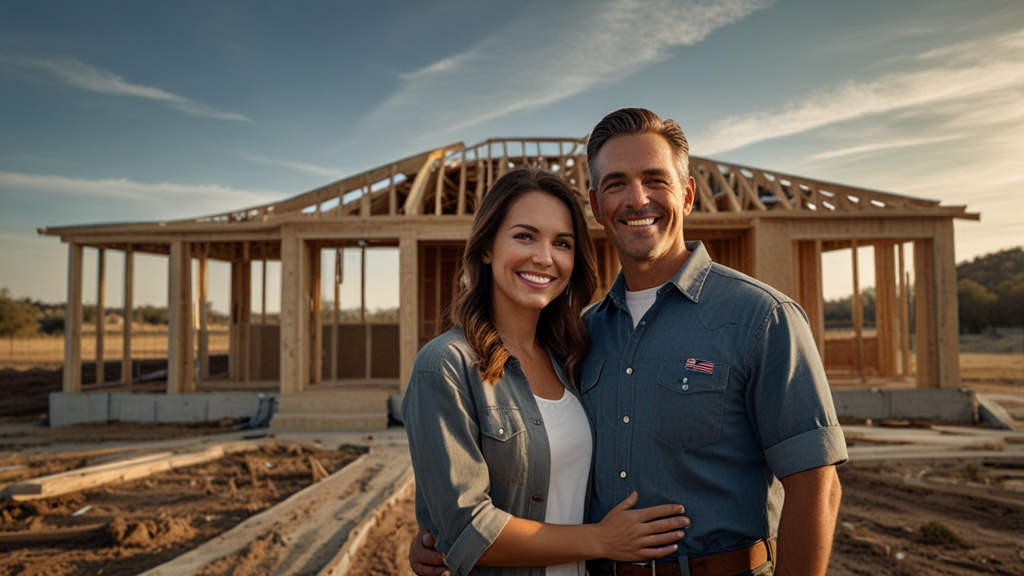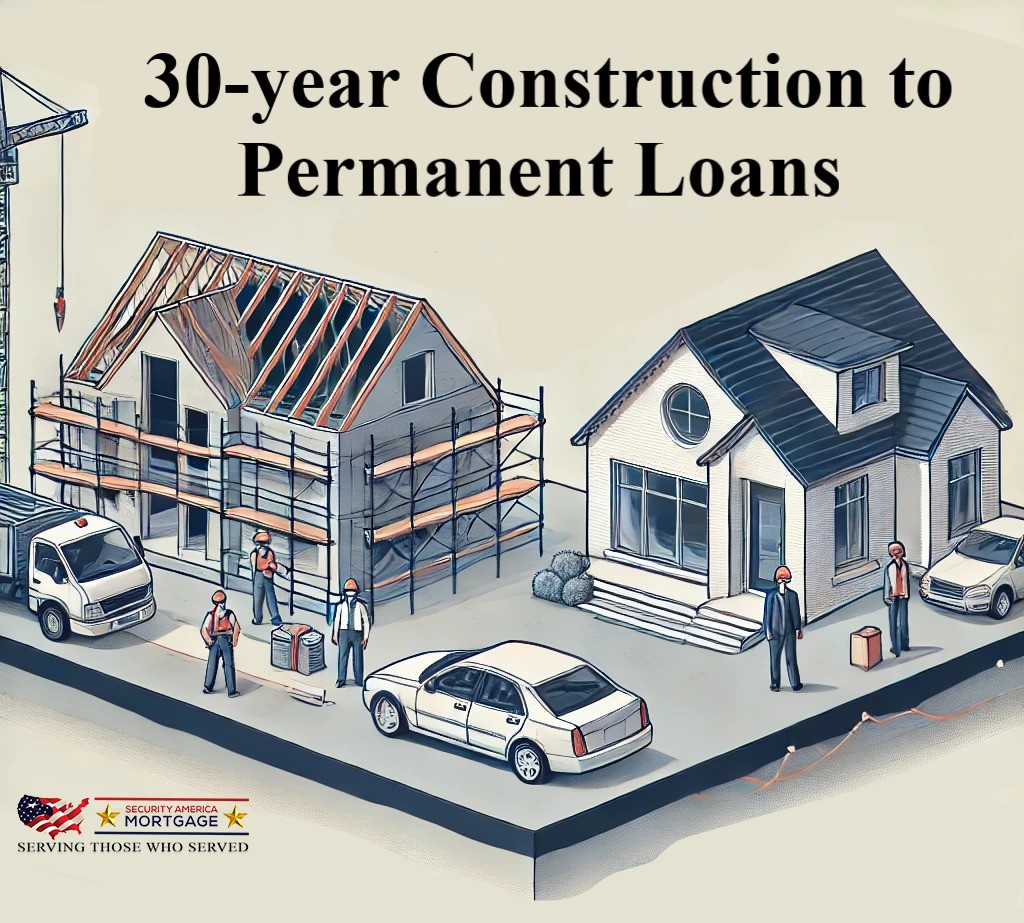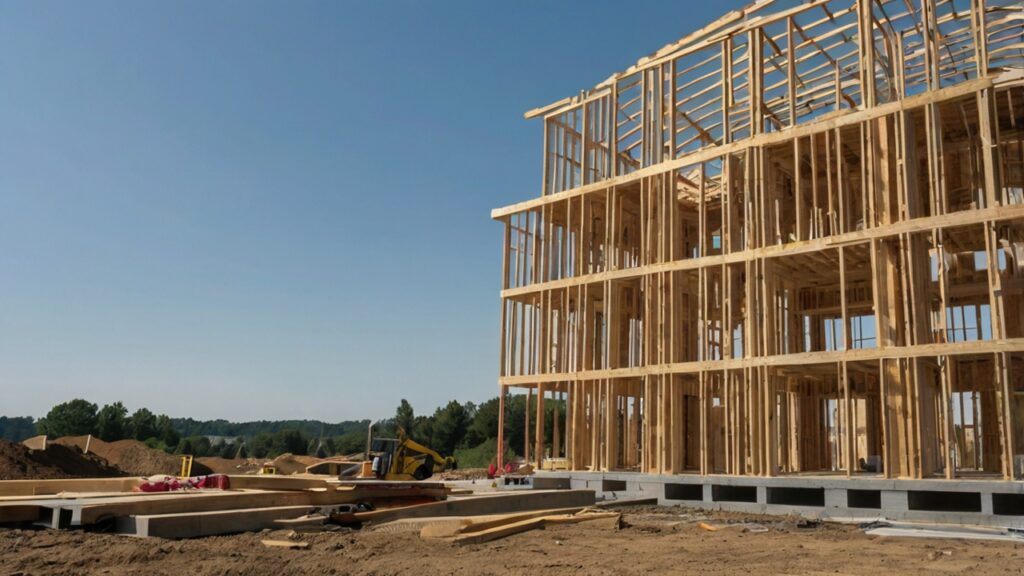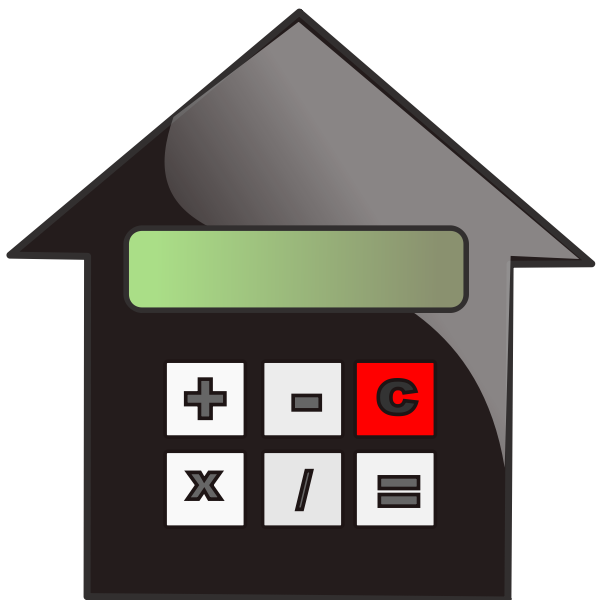
Are you looking for the easiest way to build your dream home? The One Time Close Construction Loans has made that a reality. This creative financing tool enables a simple, one stop transaction that transforms short-term construction financing into permanent mortgage financing. No more worrying about successive closings, this is the clear winner option for conventional and VA Construction Loan borrowers alike. Boosting project success rates through simplification, this allows homebuyers, builders, and contractors to deliver these purchases with professionalism and cost effectiveness.
What Are the Characteristics of One Time Close Loans?
One Time Close loans are designed specifically to simplify the homebuilding process. They eliminate the need for separate approvals and closings by combining construction and permanent financing into one transaction. Only one qualification: Saving time, money and stress for borrowers. Money is released according to a defined draw schedule tied to milestones in construction. Forward funding enables builders to build homes without the uncertainties of uncertain financing because the money is in place upfront, and builders can just build a good home.
Key Features of the Program
- Single Closing: One transaction for construction and permanent mortgage financing, different fees are paid upfront
- Draw initial funds: Provides initial funds to contractors to get started on the project right away, and then disperses additional funds at agreed-upon intervals according to the draw schedule.
- Flexible Financing Options: Work for both purchase and refinance. Purchase loans are used to cover the costs of purchasing a lot and building a home, while refinance loans help borrowers pay off existing liens on the lot and finance the construction of their home.
- Flexible Terms: Construction Terms can be 1 to 11 months. Higher initial draws may be allowed on modular homes if approved.
The Simplicity of Fewer Approvals
With a thorough contractor and project approval process handled by an experienced VA construction loan lender. Builders and contractors are vetted extensively, including license, insurance, references, and signed contracts. Requires 3-5 business days contractor approval with $150 contract review fee.
The additional steps for VA loans include a VA Builder ID that requires you to fill out the Builder Information and Certification, Equal Employment Opportunity Certification, and Affirmative Marketing Certification. This is processed by the VA to issue what is known as a Builder ID, ensuring that the builder is indeed compliant and that your VA loan approval process goes smoothly!
Project approval requires detailed plans, breakdown of costs, permits, and appraisals. The $300 project review fee is payment made by borrowers to keep everything about their construction project on track and organized.
Risk Management and Insurance
The One Time Close Construction Loans require a Builders’ Risk Policy. This is a special type of insurance and acts as a coverage for the property in the case of any damage while construction. With VA loans, the builder must include the cost of this policy in their budget. Also, borrowers need to supply a homeowner’s insurance quote to verify correct insurance payments after the property is finished.
What is a 30 Year Construction to Permanent Loan?

A Construction to Permanent Loan, also known as a single close loan, is a financing method that throws in both stages of funding the make ready and the long-term mortgage into one stream. This type of loan gets rid of the need for separate financing phases, simplifying the process and reducing costs.
Benefits of a One Time Close Loan
With this loan program, borrowers gain access to an efficient and straightforward means of funding the property of their dreams. Combining construction and permanent financing, it takes the pressure and expense out of juggling two separate loans. The same process is advantageous to first time homebuyers, repeat borrowers, and builders. This means borrowers only have to qualify for a loan one time, (peace of mind!), and builders are paid in a timely manner from a pre-approved draw schedule so work can progress without interruption.
Beyond saving money, the program provides unmatched ease. Borrowers sidestep high interest rates big down payments and requalification headaches commonly tied to traditional construction loans. Funding is confirmed so builders can efficiently finish projects, improving productivity.
Building Your Dream Home
Whether you purchase a parcel of land and need to finance the land, refinance an existing parcel, or are ready to build your dream home on an existing lot, the One Time Close Construction Loans sets the stage for you to build your dream home. Supported by reputable VA construction loan lenders, this program guides you through every step of the process, allowing you to build your dream home with assurance.
Ready to Build Your Home with a One Time Close New Construction Loan Take advantage of the ease, adaptability and effectiveness that this sort of financing allows, and make a house you’ll enjoy for many years.
What are the Types of One Time Close Construction Loans?
The most common One-Time Close programs are:
- FHA One Time Close Construction Loan
- USDA One Time Close Construction Loan
- VA One Time Close Construction Loan
- Conventional One-Time Close Construction Loan
What Is an FHA One-Time Close Construction Loan?
An FHA One Time Close Construction loan is a viable choice for borrowers with lower credit ratings or little money to put down. This loan, backed by the Federal Housing Administration, is intended to make homeownership more accessible. Key features include:
- 3.5% Down Payment: As low as 3.5% of the total amount financed.
- Flexible Credit Requirements: Can work with borrowers who have imperfect credit histories.
- Streamlined Process: Construction and permanent financing are combined into one loan with one approval process.
- Mortgage Insurance: Required for the life of the loan.
What Is an USDA One Time Close Construction Loan
USDA One Time Close Construction loans are designed for borrowers who want to build in qualifying rural locations. Supported by the United States Department of Agriculture, this loan offers:
- Zero Down: 100% financing for eligible borrowers
- Focus on Rural Development: Only for properties in USDA eligible areas.
- Low Interest Rates: Competitive rates to make homebuilding more affordable
- Income Limits: Targeted for moderate to low-income families.
What Is an VA One Time Close Construction Loan
The VA One Time Close Construction loan is for eligible veterans, active-duty military and certain family members. Supported by the Department of Veterans Affairs, it provides:
- No Money Down: Up to 100% Financing
- No Private Mortgage Insurance: More affordability than other conventional loans
- Builder Vetting: The builder has to be VA approved builder and registered with the VA.
- Construction Cost Coverage: Builders pay for the Builders’ Risk Policy premium.
What Is an Conventional One-Time Close Construction Loan

A type of a mortgage that funds the building of a new home, a Conventional One Time Close Construction Loan, provides the money for both the construction phase and the long-term permanent mortgage, which a borrower would need to pay it off. Instead of initiating two separate loans one for the construction and another for the mortgage you close on the construction loan at the outset, and the loan automatically converts to a standard mortgage once the home is built.
This combination loan is based on conventional loan security standards (no government financing). This is for credit-worthy borrowers that are ready to build on their city lot or acreage.
How Conventional One-Time Close Construction Loan Work?
Here’s how the loan generally operates:
- Application & Approval – One loan application is used to apply for the construction and the permanent mortgage.
- Loan Closings – You close one time which is at the outset of construction. The loan goes into construction mode.
- During Construction – Money is gradually withdrawn (a process known as draws) as the house is constructed. Money is released in stages after inspections.
- Loan Conversion – When the home is finished, the loan will convert to a permanent mortgage (15 or 30) and do it all over again.
There is also no need to re-qualify or pay closing costs again when the construction is complete
What are One-Time Close Loan Requirements?
One-Time Close (OTC) loans have a dual nature, combining a short-term construction loan with a permanent mortgage. Therefore, the requirements fall into two categories: Borrower Qualification and Project/Builder Approval.
1. Borrower Qualification Requirements (Financial)
| Requirement | Description | Key Differences by Loan Type |
| Credit Score | Must meet the minimum FICO score for the specific loan program. | Conventional is the strictest (usually 680+). VA and FHA are more flexible (often 620 minimum, FHA may go lower with higher down payment). USDA typically requires a 640 minimum. |
| Down Payment | The borrower must provide a down payment based on the final appraised value of the home and land. | VA and USDA can be 0% down. FHA requires a minimum of 3.5% down. Conventional typically requires 10% to 20% down. Equity in the land you already own can often be used to satisfy this requirement. |
| Debt-to-Income (DTI) | The borrower’s total monthly debt payments (including the new proposed mortgage) must not exceed a certain percentage of their gross monthly income. | FHA is generally the most flexible (up to 50% or higher with compensating factors). VA uses a residual income test in addition to DTI (usually 41% limit). Conventional is typically stricter (usually 45% maximum). |
| Employment | A history of stable employment, typically two years, is required to prove the ability to repay the permanent mortgage. | Consistent verification of income, usually via W-2s, tax returns, or bank statements, is mandatory across all programs. |
2. Project and Builder Requirements
| Requirement | Description | Key Similarities/Differences |
| Builder Approval | The general contractor must be vetted and approved by the lender and, for government loans, often registered with the specific agency (FHA/VA/USDA). Self-builds are generally NOT permitted. | All programs require an approved, experienced, and licensed builder to mitigate risk. |
| Detailed Plans | Complete architectural drawings, blueprints, specifications, and a detailed cost-breakdown (budget) must be submitted and approved before closing. | Required by all. The appraisal is conducted on the future value of the finished home based on these plans. |
| Owner-Occupancy | The newly built home must be the borrower’s primary residence. | FHA, VA, and USDA strictly require owner-occupancy. Conventional is the most flexible, allowing the property to be a primary residence, a second home, or sometimes a non-owner-occupied investment property (though requirements will be stricter). |
How Does One-Time Close Loans Work?
A One-Time Close (OTC) loan, also known as a construction-to-permanent loan, works by merging two distinct financial phases into a single transaction, eliminating the need for a second set of closing costs and a second credit qualification.2
The Single Closing Process:
- Initial Qualification: The borrower applies for the loan and qualifies for the permanent mortgage before construction begins. The lender underwrites the loan based on the borrower’s financial profile, the builder’s credentials, and the final appraised value of the completed home.
- The Closing: Before any work starts, the borrower signs all the loan documents, including the note for the permanent mortgage. This single event finalizes the financing for the lot purchase (or payoff of an existing lot loan), all construction costs, and the long-term mortgage.3
- Fund Disbursement (Escrow): The full loan amount is placed into an escrow or trust account, managed by the lender or a designated third-party construction administrator.4
The Construction Phase (The “Draw” Period):
- Draw Schedule: The loan funds are not given to the builder all at once.5 Instead, the lender and builder agree on a Draw Schedule, which outlines payment installments, or “draws,” tied to specific construction milestones (e.g., foundation complete, framing complete, roof installed, etc.).6
- Inspections: Before each draw is released, a third-party inspector (and sometimes a lender or government-agency representative) visits the site to verify that the work has been completed to the approved specifications and budget.7 This process protects the lender and the borrower from the builder running off with funds before work is done.8
- Interest-Only Payments: During the construction period, the borrower typically makes interest-only payments on the amount of money that has been drawn to date, not the full loan amount.9 This keeps initial monthly payments low.
The Conversion to Permanent Mortgage:
- Automatic Transition: Once the home is complete, a final inspection is passed, and a Certificate of Occupancy (COO) is issued, the construction phase officially ends.
- No Re-Qualification: The loan automatically “modifies” or “converts” to the permanent, fully-amortizing mortgage (e.g., a 30-year fixed-rate loan) as the interest rate was locked at the initial closing.10
- Full Payments Begin: The borrower begins making full principal and interest (P&I) payments based on the final loan balance.
Is One-Time Close Loan Still Worth Considering in 2025?
A One-Time Close (OTC) construction loan is the most recommended and the most relevant type of loan for someone who wants to build a custom home in 2025.
That has never been truer than in today’s economy and in light of the risks inherent in construction, giving you peace of mind and financial stability a two-loan process can’t.
Here are the various component of that long term proposition:
1. Financial Security and Risk Prevention (The Ultimate Edge)
- Permanent Interest Rate Lock: This provides one of the best values. You lock in your final, 30-year mortgage interest rate before construction begins. That is absolute protection for interest rates while the home is constructed, which is a significant risk with a two time close loan.
- You’re gambling that rates will be the same or lower once construction is complete, with a two-time close loan. You could end up with a much higher monthly payment if rates rise.
- With a two-time close, if you lose your job, dip below 800 credit score or take on more debt while building then the bank can deny your second loan and you are stuck with an expensive, short-term construction loan that has a huge balloon payment.
- Reduced Total Closing Costs: You are only responsible for appraisal, title and other closing costs once, which can save you a significant amount of money, usually thousands of dollars that would be needed to re-close the second time.
2. Streamlined Process and Lower Stress
- Streamlined Administrative Work – You fill out one application, go through underwriting once, and deal with one set of paperwork. The effect of this is a much less burdensome, “pain in the neck” process to have two completely different loan closings and document submissions.
- Budget With Certainty: While a new home is being constructed, typically you will only pay interest on the money that has been borrowed to that point not any loan principal helping keep payments low toward an affordable mortgage payment level while you may be incurring mortgage or rent expense where currently living. The fixed rate will also give you that peace of mind with a monthly payment that won’t change for the long run.
3. Increased Accessibility with Government Loans
- OTC loans are paired with flexible government programs, making custom building accessible to more buyers:
- VA Loan: Allows eligible veterans to build with a 0% down payment.
- FHA Loan: Allows a low minimum down payment of 3.5%, perfect for first-time or low-to-moderate-income borrowers.
And even if the locked-in OTC rate is at a higher level than the market when construction begins, factor in lower closing costs and peace-of-mind relief from price fluctuation if your financial picture suddenly changes (see potential drawback below), and One-Time Close loans are better option for cautious borrowers in 2025.
How Many One-Time Close Loans Can You Have?
In terms of residential primary residence construction, you can generally have one One-Time Close (OTC) loan at a time.
This is per the permanent mortgage requirements:
- Primary Residence Requirement: OTC loans that have government insurance (FHA and VA) are for primary residences. 1) You can only have one primary residence at a time. Meaning, you can’t use two government OTC loans at the same time to build two primary residences.
- Conventional OTC Loans: Traditional (non-government backed) loans can also be used for this type of loan, but if you already have an OTC loan (which converts to a mortgage), qualifying for a second will likely be too difficult because any lender is going to look at your debt-to-income ratio using the total debt from both homes/projects.
- Loan Completion: The OTC loan will be both the construction loan and mortgage. 2 Once construction is finished, the mortgage works like a regular one (a 15- or 30-year mortgage), and you’d need to sell the property or pay the loan in full in order to easily qualify for a new one. 3
In other words, partly it is down to the practical limit of primary residence rules and huge financial outlay to manage multiple construction projects at a time.

Can a Conventional Construction Loan be as good as or better than a FHA Construction Loan?
Right now we are only offering the conventional one time close construction loan and VA one time close construction loan. FHA is usually for someone who has fewer down payments so their loan is riskier and a little more expensive than conventional in most cases but not all cases. 20% down payment conventional cuts out mortgage insurance premiums and usually has a better interest rate if the credit is strong. Low credit borrowers with less money to put down would be compared more to a 5% down conventional loan. In most cases a conventional loan has a better rate than an FHA loan.
FHA has mortgage insurance and conventional less than 20% down will have mortgage insurance too. Whether it’s PMI or MI; it’s typically a higher premium the less money you put as a down payment. FHA, one time close construction loans are not as prominent and mainstream as conventional one time close construction loans. Because there are a lack of lenders that are providing the FHA one time close Construction Loan. It means that the cost could be higher. Typically a conventional construction loan can compete Very well with any type of FHA one time Construction that is currently on the market available for borrowers.
To builders ever have problems that caused delays in one time close construction Loans?
You can bet that builders sometimes run into issues that cause them to fall behind schedule on an OTC loan.
One-Time Close Gets It Done: The ease of use involved in a One-Time Close loan may make the project sound safer than it really is building a home, even in good times and with well-rated contractors is never guaranteed to go as planned. Any valid standard construction project delay is also a delay on an OTC loan project.
Here are the common builder-related problems that lead to delays:
- Planning and Management Issues
- Unrealistic Project Schedule: The contractor gave you a too-aggressive schedule without adequately accounting for weather contingencies, inspection delays or the availability of subcontractors.
- Poor Subcontractor Coordination: One sub does not show up in time (like waiting for the plumber) results in pushing back all your final trades work (electrician, drywaller etc.)
- Inadequate Upfront Planning: Errors in the initial building plans, designs, or material ordering can halt construction while the issues are resolved and new plans are approved.
2. Builder/Contractor Financial Stability
- Failure to Pay Subcontractors/Suppliers: The general contractor, if they are not paid by the client, can become responsible for payment to subcontractors and suppliers (a contract term referred to in contracts as being “jointly and severally liable”). If the general contractor does not pay their subcontractor or supplier it can stop work on a project, and those parties may be able to place a mechanic’s lien against the property. This halts construction right away and clouds the title, which is a big problem for the lender.
- Insolvency (Going out of Business): When a builder goes belly-up or bankrupt during a build, it halts the entire process. The borrower must then locate a new builder, re-qualify the project and settle any liens on record, creating significant long-term delays.
3. Construction and Workmanship Problems
- Errors and Rework: Mistakes made during the construction process (wrong measurements, bad installations) which are discovered during lender-required inspections will cause your builder to stop building and fix said mistake before you can get another draw release from your loan.
- Failed Inspections: The building department and the lender’s third-party inspector will make several different inspections (foundation, framing, electric, plumbing etc.) because is needed through the construction. Incorrect work and subsequent rework will slow a project down, when failed inspection lead to delayed construction.
Key Impact on One-Time Close Loans
An OTC loan has a permanent mortgage built into it, with conversion of the short term to long only allow after a property is completed.
- Risk of Exceeding the Term: OTC loans typically will have an upper bound on the construction period (e.g., 12-18 months). If the loan remains in construction past the agreed term, and this becomes a result of the builder’s delays, then any penalty will be carried by the borrower i.e., extension fee or worst still they may have to modify; prequalify for their loan.
- Holding Costs: Delays force the borrower to make interest-only payments on the drawn construction funds for a longer period, increasing the total cost of the build. They may also have to pay extended fees for temporary housing.
The most effective mitigation is choosing a highly reputable and experienced builder with a proven track record of completing projects on time and within budget.
To builders ever have problems that caused delays in one time close construction Loans?
The economy has a profound and direct impact on One-Time Close (OTC) construction loans and material costs, primarily through interest rate changes and inflation.1
Because an OTC loan locks in the terms of the permanent mortgage before construction even begins, it is particularly sensitive to the economic conditions present at the time of closing.
Here is a breakdown of how key economic factors affect these two components:
1. Impact of the Economy on the One-Time Close Loan
The core of an OTC loan is the interest rate, and that rate is highly susceptible to monetary policy (decisions by the central bank, like the Federal Reserve in the U.S.).
| Economic Factor | Effect on Interest Rates & Loan | Specific Impact on OTC Loans |
| Rising Interest Rates | Central banks raise rates to fight high inflation, leading to higher rates on all loans, including construction and permanent mortgages. | Higher Monthly Payments: The permanent, fixed interest rate locked in for the borrower is higher at the outset, leading to significantly higher lifetime borrowing costs. |
| Economic Uncertainty/Risk | Lenders become more cautious and tighten lending standards, requiring higher credit scores, larger down payments, and higher cash reserves. | Stricter Qualification: The borrower may find it harder to qualify for the loan in the first place, or they may be required to bring more personal funds to the closing table. |
| Economic Slowdown | Housing demand slows down as high interest rates price buyers out of the market. | Lower Appraisal Risk: If the housing market cools, the final “as-if-complete” appraisal value may come in lower than the initial estimate, which can impact the loan-to-value (LTV) ratio and require the borrower to cover the shortfall. |
2. Impact of the Economy on Material Costs
Material costs are directly influenced by inflation and disruptions to the global supply chain, which can cause severe budget overruns on a construction project.
| Economic Factor | Effect on Material Costs | Specific Impact on OTC Loans |
| High Inflation | Increased demand or supply constraints (e.g., lumber, steel, concrete) drive up the cost of materials and labor wages. | Cost Overruns: The initial project budget, set at the time of closing, is no longer accurate. If the builder runs out of money before completion, the borrower must cover the unanticipated cost overruns out of pocket to ensure the home is finished and the loan converts. |
| Supply Chain Disruptions | Global events (e.g., trade tariffs, pandemics, port congestion) delay the delivery of materials. | Construction Delays: Delays extend the construction phase, forcing the borrower to make interest-only payments for a longer period, increasing their holding costs until the loan converts to the permanent mortgage. |
| Labor Shortages | High demand for skilled trades (plumbers, electricians, framers) due to an active economy drives up labor costs. | Increased Budgetary Strain: Higher labor costs feed directly into the overall project cost, increasing the risk of the builder exceeding the original budget and dipping into the borrower’s contingency reserve. |
In summary, the health of the economy determines two critical aspects of an OTC loan: the fixed cost of borrowing (interest rate) and the variable cost of building (materials and labor). When the economy is characterized by high inflation and high interest rates, both costs rise, making the custom-build process significantly more expensive and riskier for the borrower.

